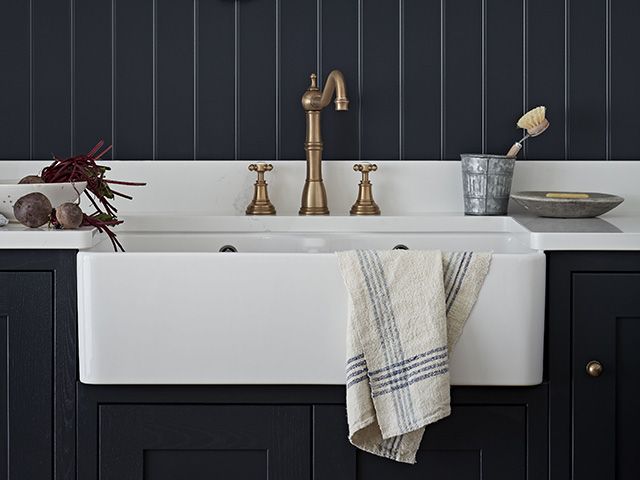
Buyer’s guide: how to choose a kitchen sink
Planning a kitchen, but thought of everything but the kitchen sink? Discover your options with our quick guide.

Image: Kitchen Makers
The sink is a key area in your kitchen – it’s used throughout everyday life, for both cooking and cleaning up, so getting it right will be the key to your kitchen’s functionality.
There are plenty of material and design options to ensure your space works well and looks good, so get to know your options with this quick and easy guide.
Material
Ceramic sinks have a smooth surface and are resistant to scratches, staining, heat, dirt and chemicals. They’re perfect for achieving a classic look, especially when used for a Belfast-style sink in a country kitchen, and ceramic sinks are one of the most popular styles. However, with a ceramic sink, if it does become chipped or succumbs to a deep scratch, the coating can becme compromised and it can be difficult to repair.
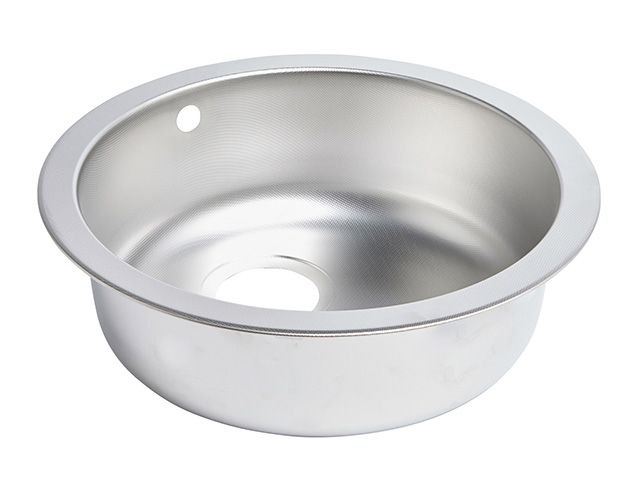
Image: B&Q
A kitchen classic, stainless steel is great when it comes to resisting chips, cracking, stains and scratches, and enduring high temperatures. Stainless steel sinks can divide opinion however – they can work in all kinds of schemes, but in their traditional form, they do have an industrial style feel which may not suit every homeowner, though you can now find steel sinks in a range of finishes.
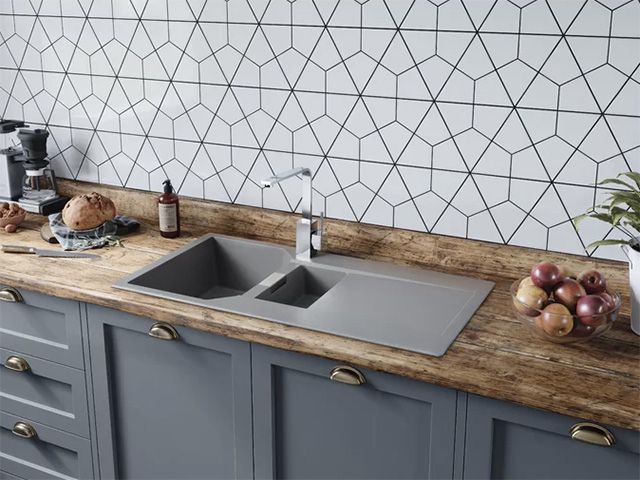
Image: Rangemaster
Granite and composite sinks offer a great amount of versatility in a kitchen design, and they’re the strongest and most durable options for the kitchen. In the same vein as using a composite stone for a sink, it’s also possible, but potentially expensive, to design a near seamless sink from the same material as your worksurface. This can be really effective in creating a streamlined look, however, it will depend on choosing a surface material that isn’t porous and can stand up to scratching and exposure to water.
Style
For many people, a double bowl sink is a modern necessity, offering a more functional space to do the washing up. Single bowl sinks can be useful, especially if you have more than one sink in the kitchen – offering a smaller space for vegetable prep. If you do choose a single sink, you may find it more useful to always wash up with a separate washing up bowl in the sink.
Butler and Belfast sinks are perenially popular, but what’s the difference? Belfast sinks tend to be narrower and deeper, while Butler sinks are wider, so pick the style that suits your needs and space best. Discuss with your kitchen designer whether you want a flush or a proud fit – while flush fitted Belfast or Butler sinks will look more streamlined, a proud overhang will help avoid water running down your cabinets everytime you wash up.
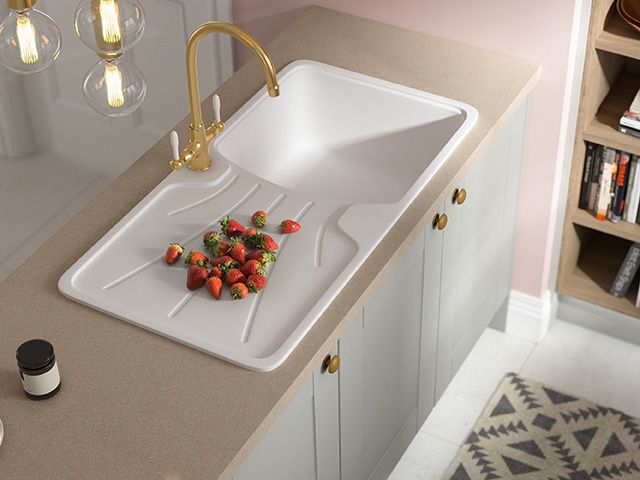
Image: Wren Kitchens
You’ll also need to think about whether you want an undermount or inset sink. Undermount means that the sink is fitted to the underside of the worktop, ensuring you get as much surface space as possible – great for a sleek look. An inset sink will sit above the worktop, and while this may interrupt the lines of the kitchen, they offer better practicality. Not only will this mean avoiding water sitting on surfaces around the sink, but the opportunity to include built-in drainage for plates.
Read more: Buyer’s guide to smart kitchen taps
Storage and drainage
Part of the functionality of your sink is incorporating space for draining the water from your drying plates. As already mentioned, an inset sink can offer built-in drainage that’s perfectly designed for your sink, however, when not in use, it’s undoubtedly less visually appealing.
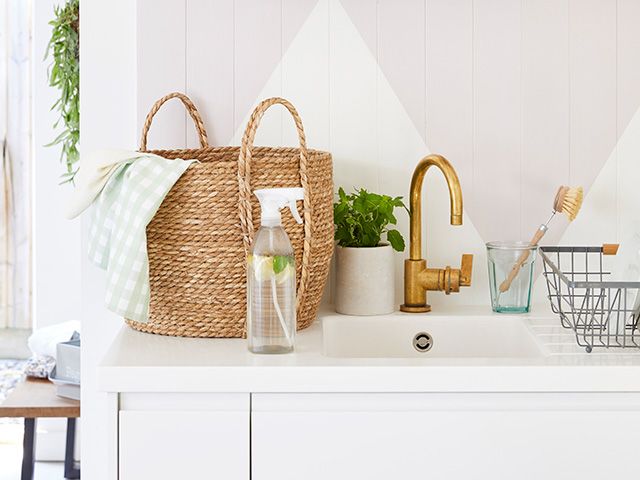
Image: Dunelm
If you do choose an undermount sink, there are still options open to you. In solid surface worktops, including stone, composites and even some non-laminate alternatives such as Bushboard, grooves can be cut into the surface to aid with draining from the worksurface, which are far less dominating look-wise.
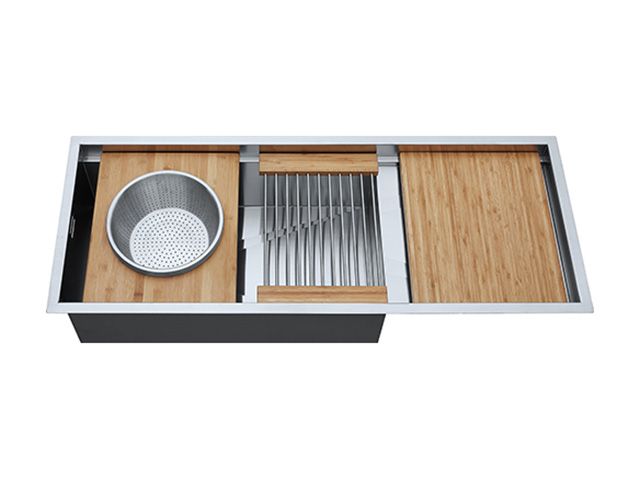
Image: The 1810 Company
While you could invest in a drainer with a tray that wouldn’t require grooves towards the sink, you can also pick up clever sink storage systems that offer space for drying too. These can also help extend your available worksurface when the sink is not in use, which is perfect for kitchens where space is at a premium.
Choosing a kitchen sink for your renovation project? Let us know how you get on by tweeting us @goodhomesmag or posting a comment on our Facebook page.




